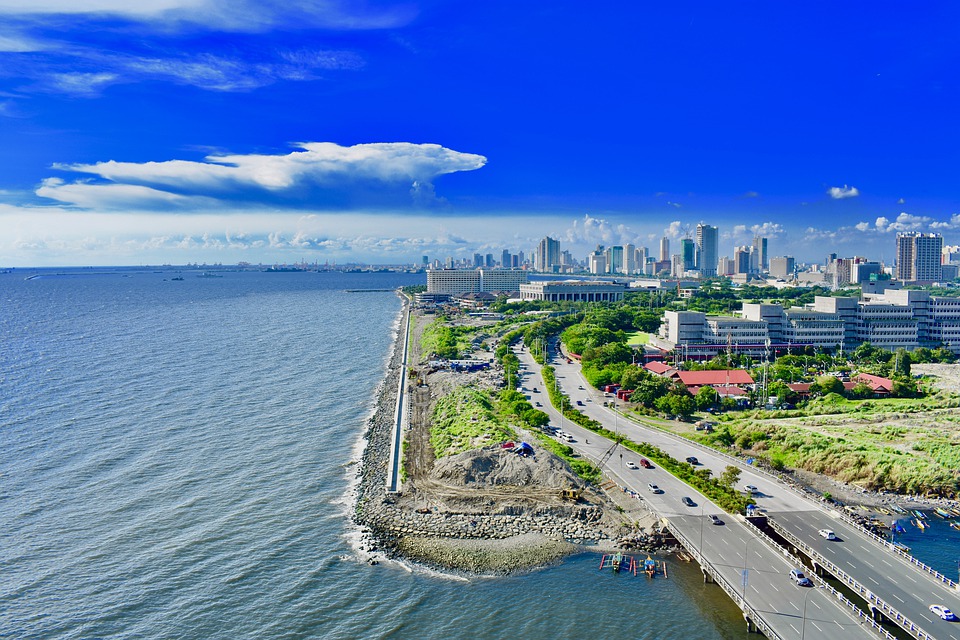China’s sweeping claims over almost the entire South China Sea have angered its surrounding countries, especially the Philippines. With the two countries at odds over the body of water, tensions have been stoked following a visit to an island by a Philippine military official.
This week, the Philippines’ Armed Forces or AFP chief Cirilito Sobejana visited one of the islands occupied by Filipinos in the South China Sea, called Thitu by PAGASA. Sobejana also praised the troops that were present for guarding the island and its residents as China looks to exert control over the South China Sea under its internationally rejected claims of sovereignty.
Sobejana’s visit also comes as the Philippines is engaging in diplomatic protests over what it claims to be the illegal presence of Chinese vessels that were suspected to be manned by militia in its Exclusive Economic Zone. However, Chinese diplomats have insisted that the vessels were fishing boats taking refuge from the weather, and no militia was on board.
“The troops are in very high spirit, their level of moral is high especially after our visit,” said Sobejana to the press. The AFP chief added that he wanted to inspect the islands to look at plans to convert the island into a logistics hub to make it easier for naval forces to refuel as they patrol the waters.
Along with the Philippines, Malaysia also has a competing claim to the South China Sea. Recently, Beijing also drew the ire of Kuala Lumpur after seeing Chinese warplanes make an incursion over its airspace last week. The Royal Malaysian Air Force identified Chinese warplanes over its airspace, claiming that the planes were flying in a tactical manner.
A Chinese source told the South China Morning Post that only two planes were dispatched to the South China Sea. The source added that the planes were transporting supplies to a Chinese-occupied island in the waters. The Chinese embassy in Kuala Lumpur also said that the planes did routine flight training and did not target any country or violate any international law.
The US Pacific Air Forces also echoed Kuala Lumpur’s claims, saying that the number of Chinese warplanes was closer to the number the Royal Malaysian Air Force officials gave.



 Trump Ends National Guard Deployments in Major Cities Amid Legal Setbacks and Crime Debate
Trump Ends National Guard Deployments in Major Cities Amid Legal Setbacks and Crime Debate  Zohran Mamdani Sworn In as New York City Mayor in Historic New Year Ceremony
Zohran Mamdani Sworn In as New York City Mayor in Historic New Year Ceremony  USDA $12 Billion Farm Aid Program Draws Mixed Reactions from Row Crop Farmers
USDA $12 Billion Farm Aid Program Draws Mixed Reactions from Row Crop Farmers  U.S. Intelligence Disputes Russia’s Claim of Ukrainian Drone Attack on Putin
U.S. Intelligence Disputes Russia’s Claim of Ukrainian Drone Attack on Putin  Boeing Secures $8.6 Billion Pentagon Contract for F-15 Jets for Israel
Boeing Secures $8.6 Billion Pentagon Contract for F-15 Jets for Israel  Zelenskiy Says Ukraine Discussing Possible U.S. Troop Presence as Security Guarantee
Zelenskiy Says Ukraine Discussing Possible U.S. Troop Presence as Security Guarantee  Salvador Nasralla Challenges Honduras Election Results Amid Fraud Allegations
Salvador Nasralla Challenges Honduras Election Results Amid Fraud Allegations  Trump Administration Clarifies Minnesota Childcare Funding Status Amid Fraud Claims
Trump Administration Clarifies Minnesota Childcare Funding Status Amid Fraud Claims  Trump Administration Cancels National Links Trust Lease for Washington Public Golf Courses
Trump Administration Cancels National Links Trust Lease for Washington Public Golf Courses  Najib Razak Files Appeal Against Latest 1MDB Corruption Conviction and 15-Year Sentence
Najib Razak Files Appeal Against Latest 1MDB Corruption Conviction and 15-Year Sentence  Pentagon Awards $328.5 Million Lockheed Martin Contract to Support Taiwan Air Force Amid Rising Tensions
Pentagon Awards $328.5 Million Lockheed Martin Contract to Support Taiwan Air Force Amid Rising Tensions  Trump Administration Audits Somali-Origin Citizenship Cases Amid Fraud Allegations
Trump Administration Audits Somali-Origin Citizenship Cases Amid Fraud Allegations  China Imposes 55% Tariff on Beef Imports Above Quota to Protect Domestic Industry
China Imposes 55% Tariff on Beef Imports Above Quota to Protect Domestic Industry  Trump Administration Lifts Sanctions on Three Intellexa-Linked Executives
Trump Administration Lifts Sanctions on Three Intellexa-Linked Executives  UN Condemns Israel’s Move to Cut Utilities to UNRWA Facilities
UN Condemns Israel’s Move to Cut Utilities to UNRWA Facilities  U.S. Questions Russia’s Claim of Ukrainian Drone Attack on Putin Residence
U.S. Questions Russia’s Claim of Ukrainian Drone Attack on Putin Residence 






























